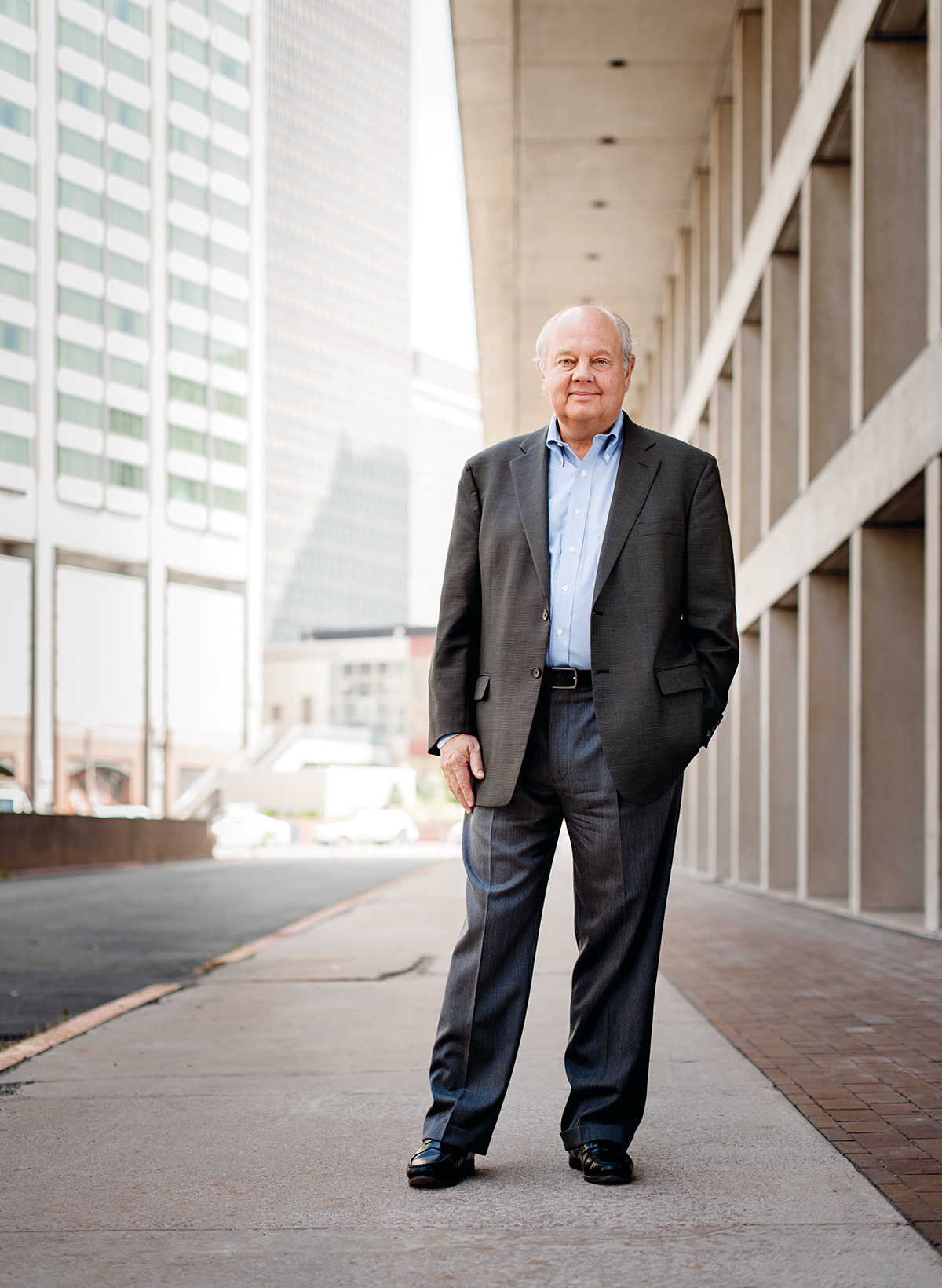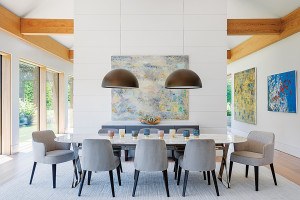Sky High

photograph by jared leeds
Gary Johnson stands just steps away from the Dalton Street site, future home to Boston’s second Four Seasons Hotel.
As a student in the 1960s, Gary Johnson watched as the firm of famed architect I. M. Pei developed the Christian Science Center. More than forty years later, he’s collaborating with Pei’s firm to design the next phase—a 699-foot tower on the last remaining undeveloped parcel of land. The $700 million dollar project will house 180 luxury condos above a 20-floor Four Seasons Hotel and, when completed, will be Boston’s tallest residential building and third-tallest structure. Here, the Wentworth and Harvard GSD grad dishes on upholding the legacy of an iconic architect, Boston’s ascent as an international city, and why the T just isn’t cutting it anymore.
Your firm rarely does towers. What brought on the partnership with Pei Cobb Freed & Partners?
Henry Cobb is very well known for his high-rise buildings throughout the world, and Cambridge Seven Associates does a lot of work with Cobb and company. You may know there’s a second building going up as part of this collection, on Belvidere Street. It’s a 298-foot-tall luxury-rental building that’s being developed by the Pritzker family of Chicago. They hired Henry Cobb to do it, and because Christian Science Plaza was designed by I. M. Pei in the ’60s, the idea was, What if we brought C7 aboard and paired them up? In other words, create a team with Boston architects and the firm that had done the original plaza. It’s a nice continuation for that firm to have worked on this site right from its inception—fast-forward to today, and we’re actually creating the next generation of buildings within that complex.
What steps were taken to preserve the integrity of the original design of the Christian Science Plaza space?
One thing we were asking ourselves from the get-go was, How do you place a very tall structure against these iconic buildings that are relatively low in scale in a vast open space? Well, when you look at a map, you’ll discover the Christian Science Plaza area is surrounded by streets that form a perfect equilateral triangle. And if you draw a line out of all the extremities of the mother church, it also forms an equilateral triangle. Oddly enough, if you look at the site where we’re building the tower, it’s in the same shape of a triangle. So from the very beginning it was clear to us that the shape of the building was going to follow that of the area. It’s a soft triangle—there are no sharp edges anywhere. If you look at the geometry of Christian Science Plaza, those concrete buildings have equally softened shapes. So the tower rises in a soft way that I think is complementary to the plaza itself.
The Hancock tower, also designed by Pei, was met with a good deal of controversy when it went up in the ’70s. How has that paved the way for this project?
We haven’t encountered the opposition that the Hancock was met with back in the day. As a design team, we talked to the BRA and the Preservation Alliance, as well as lots of individuals in the community, and have been received quite favorably. I think Boston is so different today than it was in the mid-’60s, when the concept of height was scary and threatening to cities. There’s a totally different urban-design attitude about height in buildings now. What really matters is how a project meets the ground and meets the sky. American cities have learned that height is not a negative thing: It creates value, life, and vitality. It takes land at a precious premium and allows for economically viable projects that help with the social fabric of the city.
What’s it like working with Henry Cobb?
It’s been a very happy marriage from the beginning. Architecture is a very serious business, and Henry and the Pei Cobb Freed team take it very seriously. At the end of the day, we all want to create a beautiful, iconic building for the city. So we work hard, and we challenge and question each other until we come up with what we all believe is the right answer. It’s been a privilege and a pleasure to work with Henry, because he brings a wealth of knowledge from a lifetime of designing stunning buildings in a way that brings clarity to a design vision and elegance to the way it’s executed. Ultimately, he’s enriched every city he’s been in. And we have fun, too.
What’s your favorite architectural space in Boston?
I was asked that a few years ago by WBUR, and before I even knew Henry, I said, The finest building in Boston is the Hancock tower. It acts as a visual marker. Whether you’re north, south, west, or even out in the water to the east, you know where you are because of that tower. You know what time it is by where the sun is and how it reflects off the notches in the slender end of the building. I think it’s a stunning piece of urban architecture, one that has withstood the test of time and is as beautiful today as the day it was built.
If you could change one thing about the city’s landscape, what would it be?
I’d love to see the transportation network become a little more sophisticated and extend farther out, so we use our cars less. Back in the ’80s, extending the Red Line to Harvard Square was great, but we haven’t evolved much from there. Boston has so many great things going for it: a great parks system, great shopping, a great sense of architectural and American history. We have the oldest below-ground subway system in the country, but it doesn’t reach all of the places it needs to. Especially as the city grows toward the Seaport and Somerville, it just seems like we haven’t kept pace with the growth we’ve experienced.
What’s your dream collaboration?
I think I’m having it right now! As a very young student in Boston—I was at the Wentworth Institute in my early days— I vividly remember the Christian Science building going up. I thought it was the most miraculous construction and one of the more beautiful things I’d ever seen, all concrete and radically shaped with deeply recessed windows. I researched I. M. Pei, and I wanted to be like him or work with [his firm] one day. So working with Henry and company is literally my dream collaboration—it’s been a wonderful experience.
What was behind the decision to erect this building? I mean, does Boston really need another Four Seasons—or more luxury condos?
I think [the project] speaks volumes to Boston itself as a highly desirable city to visit and live in, and I think this building will become a great piece of architecture in an already beautiful place, adding to a tremendous collection of buildings. In major gateway cities like New York, the Four Seasons is already operating two hotels successfully. The president [of the company] told the Globe that they loved the idea of having two hotels here in Boston, which is quickly becoming an international city.
So what does this project imply about the changing nature of our city?
It signals great change. It says we are now a gateway city. We have direct flights to Brazil and Beijing. This building heralds a new way of viewing ourselves.


